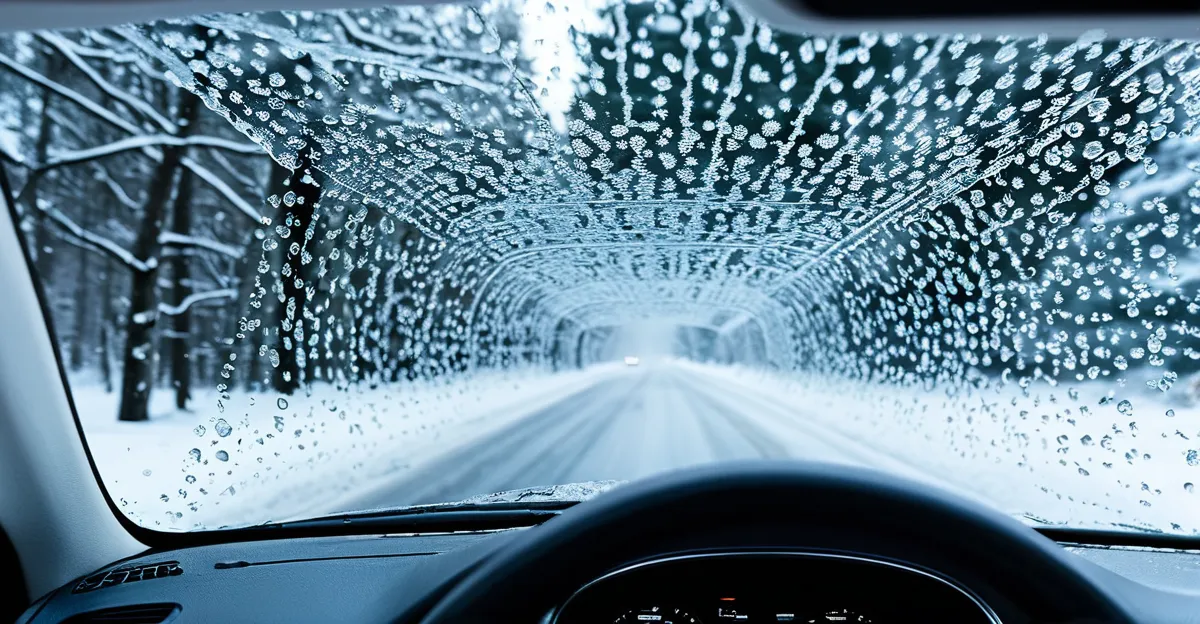Fast, Effective Windshield Defrosting Techniques
Mastering quick windshield defrosting can significantly improve safety by restoring clear visibility promptly on cold mornings. Begin by starting your vehicle and turning the defroster fan to the highest setting with warm air. This maximises heat transfer, speeding up ice and frost removal. Using the air conditioning along with warm air helps dehumidify inside air, preventing fog buildup on the windshield.
An effective windshield defrosting method involves gently scraping while the defroster runs, easing stubborn frost without damaging glass. Avoid using hot water, which risks cracking the windshield from thermal shock.
In the same genre : Enhance your vehicle’s safety: top tips for assessing and boosting lane departure warning system efficiency
Experts recommend keeping windows slightly cracked to improve airflow and displace humid air. Additionally, removing snow from wiper blades and the windshield beforehand accelerates the defrosting process.
Prioritise visibility to ensure safety by only driving once frost is fully cleared. Quick windshield defrosting thus blends mechanical heat, airflow, and manual clearing to restore your view efficiently and safely. Implementing these expert defrosting tips provides a reliable routine, turning a frustrating delay into a swift, worry-free start to your journey.
Also to discover : Mastering off-road adventures: an essential guide to expert differential maintenance and safety
Essential Tools and Products for Winter Defrosting
For tackling winter frost, choosing the best windshield defrosting tools can make a significant difference. Highly recommended are premium ice scrapers designed with ergonomic handles and durable blades to remove stubborn ice efficiently. Pairing these with effective de-icing sprays helps dissolve ice layers quickly, preventing damage to your windshield.
Electric defrosters are another excellent option. These devices use controlled heat to melt frost gently, often integrated into vehicle designs or available as aftermarket solutions. Heated wiper blades complement this by preventing ice buildup during cold conditions, ensuring a clear view without manual scraping.
Selecting the right tools depends on frost severity. For thin frost, chemical de-icing sprays may suffice. Thicker ice layers require sturdy scrapers combined with sprays or electric defrosting. Using these tools properly saves time and protects your vehicle’s glass integrity.
Investing in the best windshield defrosting tools, combining recommended de-icing sprays with quality ice scrapers, offers a reliable, efficient strategy for all winter conditions. This approach ensures safety and convenience, reducing frustration during your cold-weather commutes.
DIY Defrosting Solutions and Home Remedies
Sprucing up your car’s windshield without pricey products is possible with DIY windshield de-icing solutions. A common and effective homemade de-icer recipe combines three simple ingredients: two-thirds rubbing alcohol, one-third water, and a few drops of dish soap. This mixture melts frost rapidly and prevents refreezing.
To apply, pour the solution into a spray bottle. Spray evenly over your frosted windshield and wait 30 seconds before gently scraping off the ice with a plastic scraper or a soft cloth. Avoid metal objects that can scratch glass.
Other home remedies for windshield defrosting include using white vinegar diluted with water in a 3:1 ratio—this avoids harsh chemicals while effectively dissolving frost. Alternatively, warm water (never hot) applied gently can loosen ice, but be cautious as temperature shocks might crack cold glass.
To prevent frost buildup overnight, placing a clean towel or cardboard over the windshield works wonders. Even leaving your windshield wipers up can stop them from freezing to the glass. These simple household tactics provide practical, safe solutions that keep morning commutes smooth without specialty products.
Prevention Strategies for Ice-Free Windshields
Keeping frost at bay with smart habits
Preventing windshield frost is simpler when you adopt proactive winter car care tips. One effective frost prevention method is using a windshield cover overnight. This barrier physically blocks frost buildup, saving time in the morning. Another helpful strategy involves parking your car strategically—for instance, facing east allows the morning sun to naturally defrost your windshield. Avoiding shaded or low-lying areas can also reduce frost accumulation.
Adjusting your vehicle’s climate control settings before parking can minimize moisture inside the car. For example, running the heater briefly and turning off recirculation helps lower humidity, reducing frost risks on the glass. Consistent windshield maintenance, such as cleaning and repairing chips, improves visibility and prevents ice from adhering.
By integrating these frost prevention methods, you not only ensure a clear windshield each morning but also protect your car’s glass from damage caused by scraping or prolonged ice exposure. Regular upkeep as part of your winter car care tips leads to safer and more efficient driving throughout the cold season.
Expert Insights: Safety, Efficiency, and Mistakes to Avoid
Proper windshield defrosting safety is critical to ensure clear visibility and prevent accidents during winter. One essential tip is to start the defrosting process by turning on the rear and front defrosters immediately. Avoid scraping while the glass is still cold, as this may crack the windshield. Gradually increasing the heater temperature prevents sudden temperature changes that can damage the glass.
A common defrosting mistake is using hot water on a frozen windshield. This causes thermal shock, risking cracks. Another error is failing to remove snow and ice from wipers before activating them, which can damage the blades and motor.
For efficient winter prep for cars, experts recommend using a quality windshield cover overnight to reduce frost buildup. Starting the engine a few minutes before driving lets the defroster work efficiently without wasting time. Additionally, keeping your coolant levels checked ensures the heating system runs smoothly, accelerating defrosting.
By avoiding these mistakes and following safety tips, you can save valuable time and drive confidently even in the harshest winter conditions.
